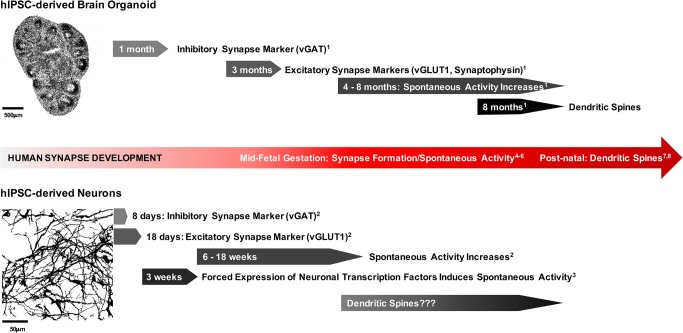FIGURE 1:
Time course of synapse development across hIPSC models. Brain organoids develop synapses and synaptic activity similar to those of the human brain. During midfetal gestation (∼18 wk), synapses form and spontaneous activity begins (4–6: Tau and Peterson, 2010; Moore et al., 2011; Luhmann et al., 2016). Dendritic spines form postnatally (7,8: Yuste and Bonhoeffer, 2004; Koleske, 2013). In both whole-brain organoids (1: Quadrato et al., 2017) and forebrain cortical spheroids (Pas¸ca et al., 2015), spontaneous activity begins after ∼4 mo of culture. Furthermore, whole-brain organoids exhibit dendritic spines after 8 mo of culture (1: Quadrato et al., 2017). By contrast, hIPSC-derived neurons exhibit earlier expression of synaptic markers and spontaneous activity (2: Nadadhur et al., 2017) that can be increased by forced expression of neuronal transcription factors (3: Zhang et al., 2013). It is unclear whether hIPSC-derived neurons form dendritic spines. The top image is a cryosection of a forebrain cortical spheroid developed according to the methods of Pas¸ca et al. (2015), and the bottom image is a 2D hIPSC-derived cortical neuron culture developed according to Brennand et al. (2015).

